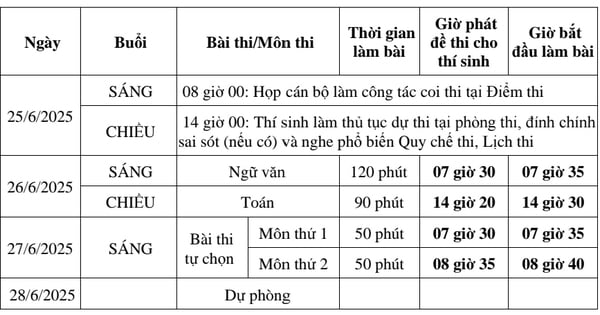(Fatherland) - The Japanese government continues to promote this art form internationally and nurture it into a key industry.
According to the Financial Times (FT), manga and anime are icons of entertainment art, which are Japanese comics and cartoons. Both manga and anime are widely loved by fans in Japan and around the world.
The Japanese government continues to increase its influence on this art form and nurture it into a key industry of the country.

Manga and anime are iconic in the entertainment arts. Photo: María Hergueta/FT
Anime and manga are closely related. While manga are Japanese comics drawn on paper, anime are animated films. Many anime films are actually adaptations of manga, so there are many similarities in terms of plot and characters.
Japanese anime, with its enormous influence and outstanding value, has not only affirmed its position in popular culture but also become a symbol of creativity and art.
Through anime and manga, overseas fans often want to come to Japan to experience the locations where the stories and scenes are filmed. This is also a way to promote tourism in Japan.
How Anime took over the world?
The Financial Times noted that the global spread of Japanese anime is expanding. Japanese animation is also increasingly creating a buzz in the world entertainment industry.
Currently, there are an estimated 800 million people worldwide who are fans of Japanese animation — also known as anime — and that number is expected to rise to one billion in the near future. If that happens, the number of fans of Japanese animation will be equivalent to the number of global tennis fans.
As things stand, Japan's anime industry is on track to conquer the world even further. In its most recent market trend report, the Association of Japanese Animations found that the industry has made a significant mark on the international stage.
The overseas Japanese anime market is now almost as large as the domestic market and is growing faster. The products of Japanese anime studios are mainly consumed outside of Japan.
Currently, the bulk of global anime distribution is being done by Crunchyroll, a streaming service that became a subsidiary of Sony Music Entertainment (Japan) in 2021 and distributes more than 1,400 anime titles to over 200 countries and regions.
Sony expects Crunchyroll to be a major driver of growth in the company's film and television division over the next few years, but a lot of Japanese anime is also reaching other countries via Netflix and other streaming services.
Unlike some other forms of entertainment, which saw a surge in popularity during the Covid-19 pandemic but then suddenly declined, anime consumption has continued to grow since 2022.
In 2023, total sales of Japanese anime production companies increased by nearly 23% compared to 2022 and reached an all-time record.
According to a research team from private research firm Teikoku Databank, this figure will continue to break through in 2024. Analysts at Jefferies also cited predictions that the global anime market will nearly double from $31.2 billion in 2023 to $60 billion in 2030 as the shift of anime culture has spread to many other markets such as the US and Europe.
The Return of Dragon Ball TV Series
In October 2024, another important moment has come. After a 6-year hiatus, a new Dragon Ball TV series will air.
The return of "Dragon Ball" with the project "Dragon Ball Daima" makes fans extremely nostalgic and expectant.
On October 12, the first episode of the Dragon Ball Daima project officially aired. The film is considered a sequel to the hit Dragon Ball Z from nearly 30 years ago and is making the audience extremely excited.
Not only is it a new film version based on the legendary Dragon Ball comic, Dragon Ball Daima is also the last project that Akira Toriyama - the father of the series - embarked on production.
Importantly, the title will appear on the international distribution channels of both streaming services Crunchyroll and Netflix within a day or so of its initial broadcast on Japanese television.
This makes a lot of sense, said Pelham Smithers, an analyst who has long followed the industry. Just a few years ago, Japanese studios and distributors would have to wait for any anime to achieve clear domestic success before releasing it internationally.
Now, that no longer matters as a huge global fan base now embraces Japanese anime.
In a report released in June this year, the Japanese government released figures on the export value from the creative industry and content production for manga, anime, movies and games in Japan.
By 2022, that export turnover will reach about $30 billion. The report compared this figure to the $34 billion export turnover of the steel industry and $38 billion of the semiconductor industry./.
Source: https://toquoc.vn/thanh-cong-tu-anime-gop-phan-tich-cuc-vao-cong-nghiep-van-hoa-o-nhat-ban-20241111095747565.htm



![[Photo] Prime Minister Pham Minh Chinh attends the 2024 Outstanding Young Vietnamese Faces Award Ceremony](https://vstatic.vietnam.vn/vietnam/resource/IMAGE/2025/3/24/910d105845ce406ba15ed33625975a78)
![[Photo] Renovating the "green gem" in the heart of the capital](https://vstatic.vietnam.vn/vietnam/resource/IMAGE/2025/3/24/e5a1627db4504cd88b6b81163df1b18b)

![[Photo] Overcoming the sun to remove temporary and dilapidated houses for poor households](https://vstatic.vietnam.vn/vietnam/resource/IMAGE/2025/3/24/824ba71165cc4f8fb6a3903ca0323e5d)
![[Photo] Prime Minister Pham Minh Chinh attends conference on ensuring security and order in the Northwest and surrounding areas](https://vstatic.vietnam.vn/vietnam/resource/IMAGE/2025/3/24/933ce5c8b72e4663bd6c6cd8be908f23)









































































![[Emagazine]. Comprehensive and remarkable development after 50 years of liberation](https://vstatic.vietnam.vn/vietnam/resource/IMAGE/2025/3/24/4766c84459144b06acb409fc167e2845)











Comment (0)